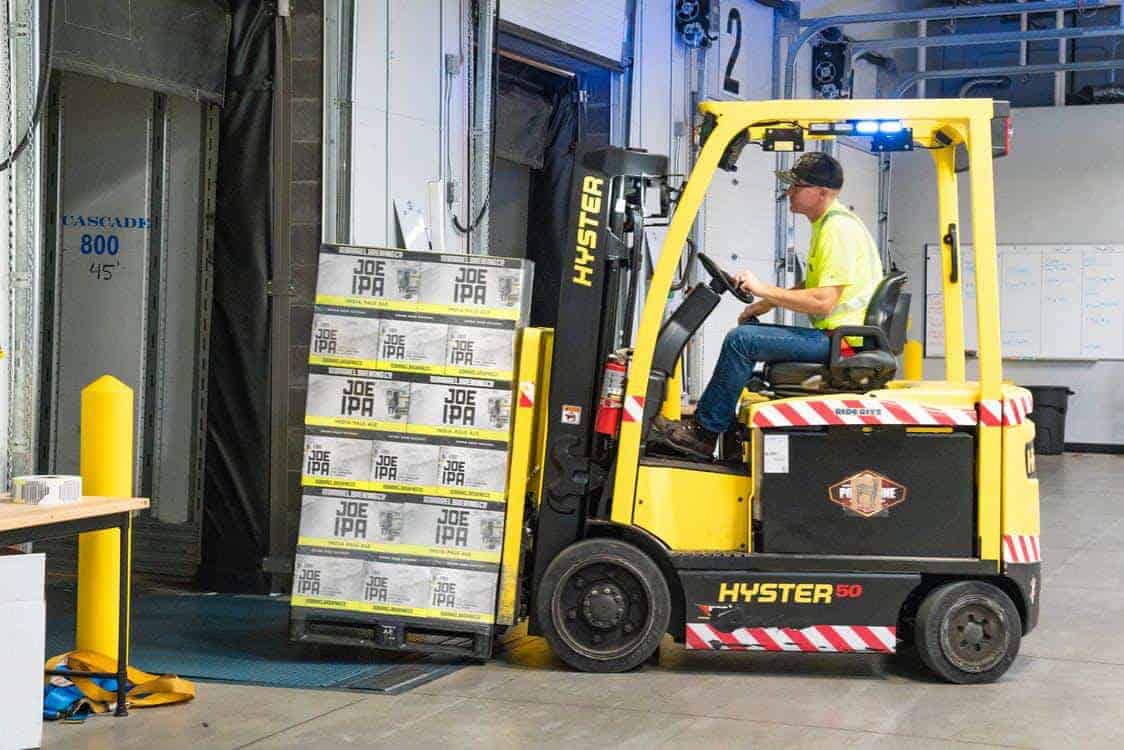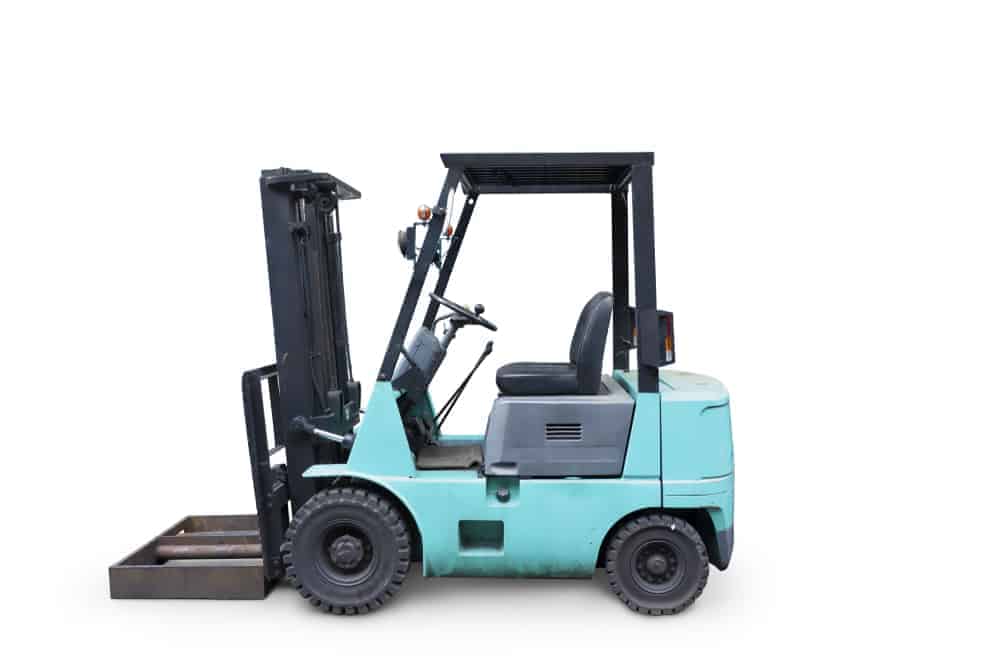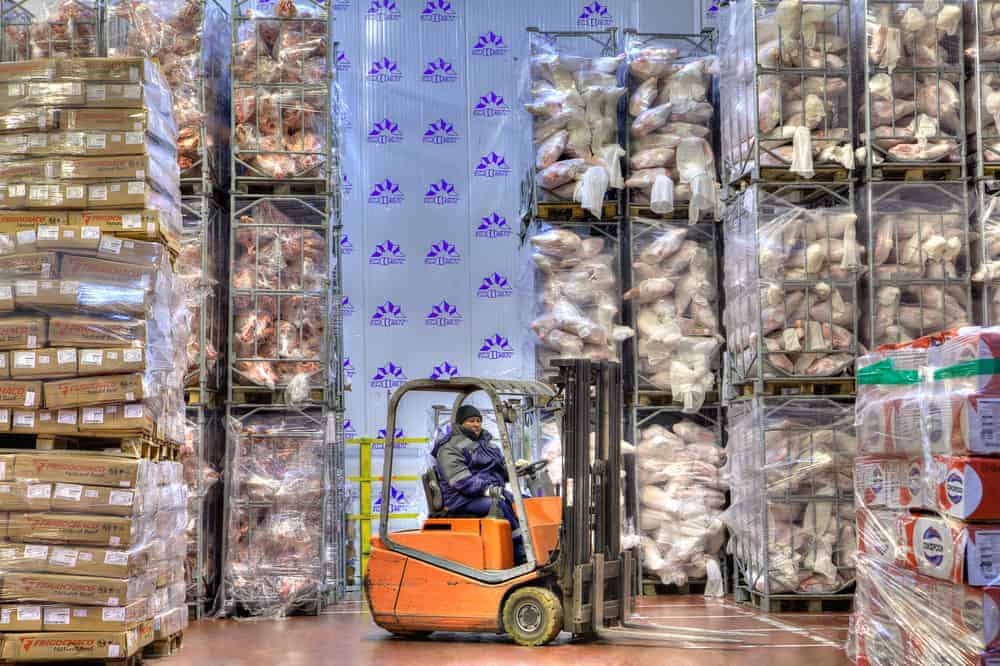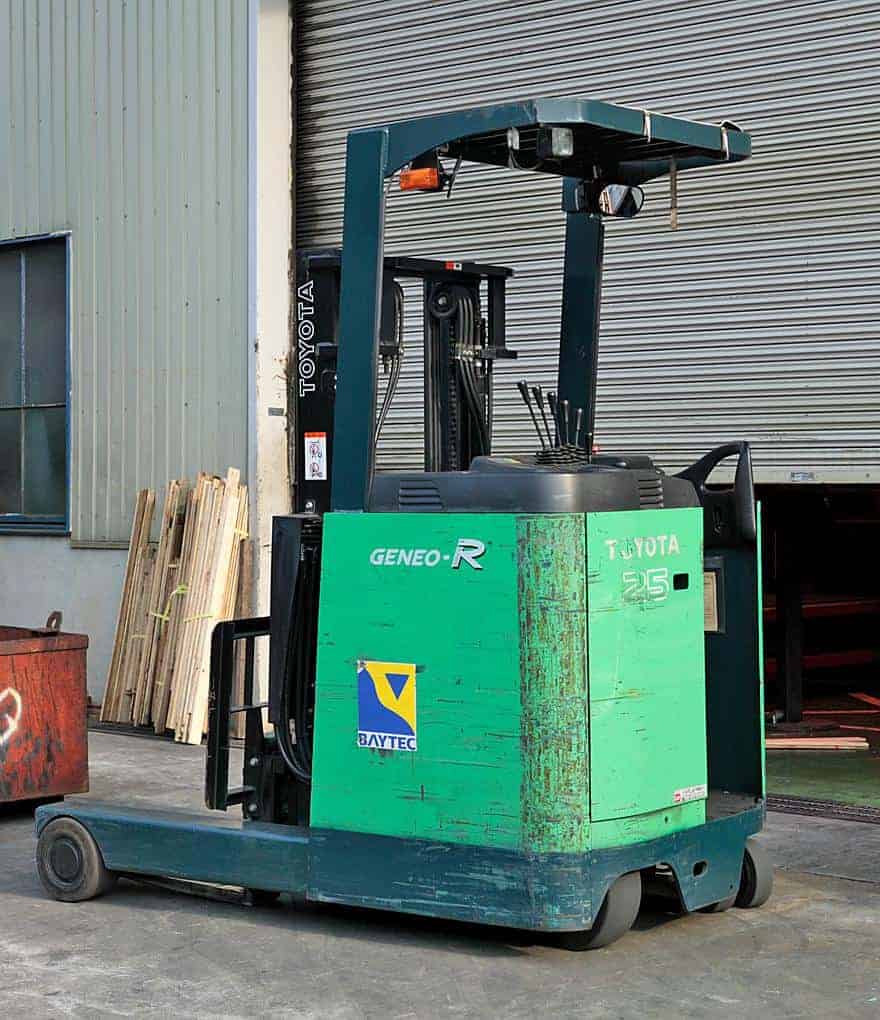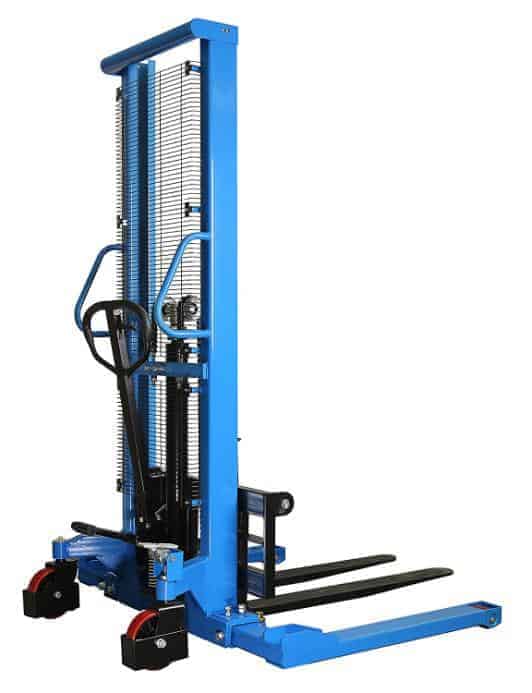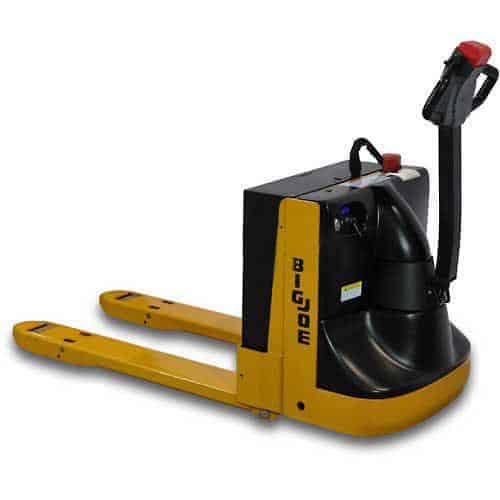Every one of us has seen forklifts trucks in supermarkets or warehouses moving heavy stuff and putting it high above where a normal’s human’s arms can’t reach. A forklift is one of the most useful and important pieces of equipment you need to invest in if you run a warehouse, a storage facility or work on a construction site.
However, as with all things, forklifts come in a wide variety of types and styles. Therefore, it can be a bit difficult to know what kind if best for a certain environment. Whether you are looking for forklifts that can safely lift extremely heavy objects or machines that can place items high on top of shelves, this guide can give you a list of some of the most popular types.
[toc]
Types of Forklifts
Some of the most popular types of forklifts include:
- Warehouse forklifts
- Counterbalance forklifts
- Three-wheel counterbalance forklifts
- Reach forklifts
- Rough terrain forklifts
- Side loader forklifts
- Telescopic handler forklifts
- Industrial forklift
- Pedestrian operated pallet trucks
- Walkie/Power pallet trucks
- Cherry picker/Order picker forklifts
Warehouse Forklifts
The warehouse forklift is the most popular and well-known type of forklift. This forklift looks like a yellow golf cart and is equipped with twin forks at the front. The warehouse forklift, as the name indicates, is used in facilities like warehouses, where large inventories are stored. These lifts are perfect for loading and unloading pallets as well as off-loading and transporting items from delivery trucks.
Most warehouse lifts have a capacity of lifting at least 5,000 lbs; however, larger, heavy-duty models are capable of lifting up to 25,000 lbs. Some of the most popular types of forklifts are the Toyota 3-Wheel Electric Forklift and the Komatsu 20 BX50 Hyster.
Counterbalance Forklifts
The counterbalance forklift is a type of warehouse forklift and is one of the most common vehicles used in indoor warehouses and superstores. Counterbalance forklifts have forks at the front and a weight at the front to counterbalance the load. Electrical-powered counterbalance forklifts can work with a lighter counterweight at the back since their battery is the source of power and lends stability to the vehicle. These lifts do not have any outrigger arms, giving the truck the ability to move to the exact location of the racking.
Counterbalance forklifts come in diesel, gas and electric powered versions. Many of them are equipped with sideshifts, driver cabs, and a mast tilt mechanism.
Three-Wheel Counterbalance Forklifts
These counterbalance forklifts are similar to the regular four-wheel counterbalance forklifts mentioned above, but they are equipped with only three wheels. This gives them the benefit of improved navigational control, including the ability to move in tight circles and easily accessing narrow aisles and storage spaces.
Three-wheel counterbalance forklifts are perfect for both inside and outside use as well as load racking. The tight maneuverability and the counterbalance combined makes sure the vehicle operates at maximum productivity.
Reach forklifts
Reach forklifts’ main feature is that they have an extended height which can lift cargo and rack it up high, even in excess of 10 meters. They also have wonderful maneuverability and can work in confined environments. These trucks come equipped with stabilizing legs in the front which take the brunt of the weight and steadies the load. They have no need of a counterweight since they have the stabilizing legs and electric-powered battery.
Reach forklifts are great for warehouse operations but are not often used outdoors. Their low undercarriage ground clearance makes it difficult for them to work on uneven surfaces and their electrical system may become out of order if it is frequently jarred.
Some reach forklifts come with a tilting cab mechanism which makes it easier for the operator to view the work. Others come with open overhead guard for maximum visibility. Sometimes, reach trucks are also equipped with cameras on the fork carriage connected to an LCD screen in the cab, which allows the operator to navigate and rack the load easily. This system can be either wired and wireless, though wired systems are better compared to wireless as there is no signal interference.
There are three main types of reach forklifts:
Stand-up Trucks
Stand-up truck is the most common reach forklift. They can typically lift a single load per bay. The twin forks in the front can easily slide beneath a palletized load and transport it to the top.
Double-deep Trucks
Double-deep trucks are similar to stand-up trucks but have longer forks, so they can lift more than one palletized loads per bay. The longer forks can reach right to the back of the bay.
Saddle Trucks
Saddle trucks come with long forks as well but they also have the ability to slide under and grip the edges of the load for more secure delivery. They are ideal for placing multiple loads on a bay that you need to access from different sides.
Rough Terrain Forklifts
Rough terrain forklifts are the ideal type of forklifts for outdoor work on rough, uneven, or challenging terrain. These forklifts come with oversized, pneumatic tires, which are inflatable and have thicker threads, which can provide greater stability and balance on uneven surfaces. They also have engines that are far more powerful than those of indoor forklifts. This helps the forklifts reach a higher speed, improved traction and better maneuverability for transporting heavy loads over rough ground, mud and even snow and ice.
They also come equipped with a calibrated counterbalance at the back of the vehicle to prevent the truck from toppling over. Most models have the capacity to shift loads between 6,000 to 8,000 lbs.
Some popular models of rough terrain forklifts include the CASE 588H and JCB950.
Side Loader Forklifts
Side loader forklifts have forks attached to the sides. The driver stands in a sideways compartment as the side loader loads and unloads cargo on its side. Since they pick up loads from the side, these vehicles are great for working in narrow areas and can easily drive up alongside the rack and unload without having to turn. This means they are perfect for handling long objects that other forklifts can’t like metal pipes, sheets, and timber. However, unlike other forklifts, they have limited ability to maneuver and handle other types of palletized loads.
Side loader forklifts also come in three versions:
Enclosed cab
The enclosed can is mostly used for outdoor work.
Stand-up cab
The stand-up cab is typically used for indoor load transporting.
Multi-way truck
The multi-way truck comes with a mechanism that allows the wheels to rotate 90 degrees, allowing for efficient drivability and transport in all directions.
Telescopic Handler Forklifts
Also called the telehandler, this forklift comes with an extendable arm and a boom, rather than a standard straight mast that is a characteristic of other counterbalance or reach forklifts. They are also equipped with practical attachments like a bucket, lift table, and a pallet fork at the end. This allows them to reach a height of 40 to 57 ft and lift 5,500 to 10,000 lbs of weight. This makes it seem more like a small crane than a forklift.
Telescopic handler forklifts are ideal for unloading cargo in odd angles and tight spaces. Because of this ability, they are most often used in the construction industry as well as the agricultural industry. And have replaced trough terrain forklifts in both these sectors since they offer more flexibility and versatility.
Another big benefit of telescopic forklifts is that they offer the ability to access both sides of the delivery truck with only one side; this increases the efficiency of work. However, because of their larger size and complex design, they can sometimes be a bit unreliable and are certainly much costlier than their traditional counterbalance counterparts.
Some of the popular models of telehandlers are made by major brands like Caterpillar, Bobcat, Genie and Haulotte.
Industrial Forklift
The large capacity forklift or the industrial forklift has the combined functionalities of a warehouse forklift and a telescopic handling forklift. Although it cannot access difficult spaces like a telehandler, it can take much heavier loads to much higher heights than the other forklifts. The maximum weight it can bear is 30,000 lbs, but you only need this amount of power in very specialized jobs. Hence, industrial forklift only has a limited scope.
Some big names that manufacture industrial forklifts include the Mitsubishi and NACCO Industries.
Pedestrian Operated Pallet Trucks
Pedestrian operated or hand pallet trucks are the most commonly used forklifts in warehouses and stores. They operate on very simple principles with the operator pushing the forks beneath the pallet, pumping the hydraulic jack to raise the fork and moving the weight with the handle. The front wheels are placed inside the forks and are separated vertically from the fork as it is lifted.
The hand pallet trucks come with limited functionality and are only able to transport goods at ground level with limited height. They are also only capable of holding loads of small size and weight.
Although these pallet trucks don’t have maneuverability or power, they are very cheap. The most popular pallet jack models include the Mighty Lift 20 x 36 inch Pallet Truck.
Walkie/Power Pallet Trucks
Walkie or power pallet trucks are very similar to hand pallet trucks, except that they can lift and transport loads with the help of an electric motor. These vehicles do not have cabs as they are quite small. Instead, the worker walks behind the trucks and steer it with the handle. Although they have the same limited maneuverability as hand pumps, they can reach greater heights and can get off much higher off the ground.
These power pallet trucks also come with a paddle control with which you can raise or lower the forks and make the vehicle move forward or backward. These vehicles work the best on smooth surfaces.
Cherry Picker/Order Picker Forklifts
An order picker is a sub-category of a power pallet truck and can reach a height of 32 ft. Its biggest advantage is that it is designed to lift the driver while they are still operating the truck. This gives increased visibility and can help the operator maneuver the goods in the correct position.
These order pickers are only designed to pick up one or two units rather than entire pallets and work best in customer order warehouses.
Classification of Forklifts
Forklifts are also organized based on the classification, given by the Occupational Safety and Health Administration (OSHA). The machines are classified based on their usage and fuel type. A forklift operator must be certified to use a certain type of forklift. The different forklift classifications are:
Class I: Electric Motor Rider Trucks
These trucks are usually designed for sitting operations although there are some stand-up models, as well. These forklifts are counterbalanced by the battery and one of their main benefits is that they produce no toxic emissions and are very quiet. Hence, they are ideal for indoor use.
They are extremely flexible and can move right into the back of a tractor-trailer to grab pallets. Some models also come with superior maneuverability and can fit into tight spaces. They may also have weight-sensitive features that allow them to work in spaces like old factories. They can typically carry a weight of 3,000 to 8,000 lbs but some manufacturers like Mariotti have models which can carry loads that weigh up to 2,300 lbs.
Class II: Electric Motor Narrow Aisle Truck
These trucks can easily operate in narrow spaces like warehouse aisles, which means they can access ore racking space without expanding your storage area. Because of their compact size, many units are stand-up models, although some sit-down versions are also available in the market.
Class II forklifts include reaching forklifts, which can reach up to load pallets or order pickers, which come with a platform to raise or lower the operator. They are usually used for picking up and putting away items.
Some side loaders also list under this class. They can support weights from 3,000 to 5,000 lbs.
Class III: Electric Motor Hand Truck
Electric motor hand trucks include forklifts like hand jacks and pallet trucks which can only raise the load at a limited ground level. They come in both rider and walk-behind versions and have excellent maneuverability due to their small size.
Class III forklifts are hand-controlled and the operator can control them using a steering handle or tiller which come with a paddle control. These forklifts are great for use in small storage facilities. Walkies, both with straddle legs or counterbalance, fall in this class.
These forklifts have a maximum weight capacity of 8,000 lbs.
Class IV: Internal Combustion Engine Trucks With Solid Cushion Tires
These forklifts come in sit-down designs and are made for indoor use. They have solid cushion tires and their engines run on either petrol or diesel fuel. Since they have cushioned tires, they ride low to the ground and are well suited for low-clearance environments. They are perfect for moving pallets of items from the loading dock to the storage area.
Weight capacity ranges from 3,000 to 15,500 lbs but some powerful specialized models can support weight up to 80,000 lbs.
Class V: Internal Combustion Engine Trucks With Pneumatic Tires
These forklifts can be used indoors in large warehouses but are specifically designed for outdoor work. They have a similar appearance and capabilities as Class IV forklifts, except they have pneumatic tires. Some models which work in lumberyard and construction sites may come with reinforced pneumatic tires to prevent puncture.
These vehicles may either have a single-wheel or dual-back wheel configuration and their engine is fueled by diesel, CNG, petrol or gasoline. They can support loads with weight ranging from 3,000 to 55,000 lbs.
Class VI: Internal Combustion Engine Trucks With Pneumatic Tires
Class VI forklifts are also known as “tuggers” and they pull along rather than lift loads. Models can be powered either by electric or internal combustion engines and they are very versatile.
An example of this type of forklifts can be seen at airports in the form of a low-rise tractor towing luggage carts from the terminal to the plane.
Class VII: Internal Combustion Engine Trucks With Pneumatic Tires
These forklifts are characterized by oversized tires which offer a lot of traction for outdoor work on uneven, rough surfaces. They are almost always run by diesel fuel and may also come with a straight or telescoping mast for increased reach.
Class VII forklifts come in both two-wheel and four-wheel versions and are used in construction sites and lumberyard where the load has to be lifted to highly elevated areas. Operating them requires special training.
Class VII forklifts have a weight capacity range of 6,000 to 12,000 lbs and even more in some cases.
How To Select a Forklift
To select a forklift, you first need to determine how it will be used. Here are some aspects that you should check out:
- Weight Capacity: How much weight do you need to lift and transport?
- Terrain: Can the surface of the ground support the forklift? Is it flat and even or rough?
- Height: How high do you want to place your cargo?
- Fuel: What kind of fuel do you need? Electricity, diesel, petrol or gas?
Regardless of which type of forklift you ultimately choose, it is important that you first get the proper training to ensure you can operate it safely. Always go to a credible training facility which can provide you the requisite training suited for your work.


